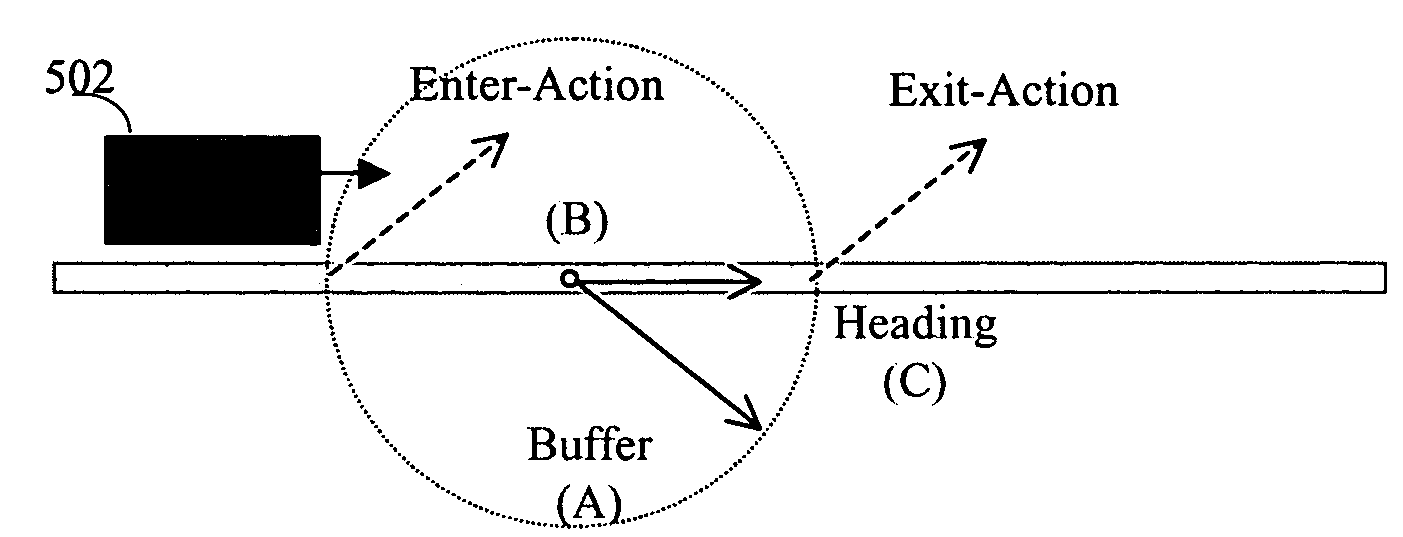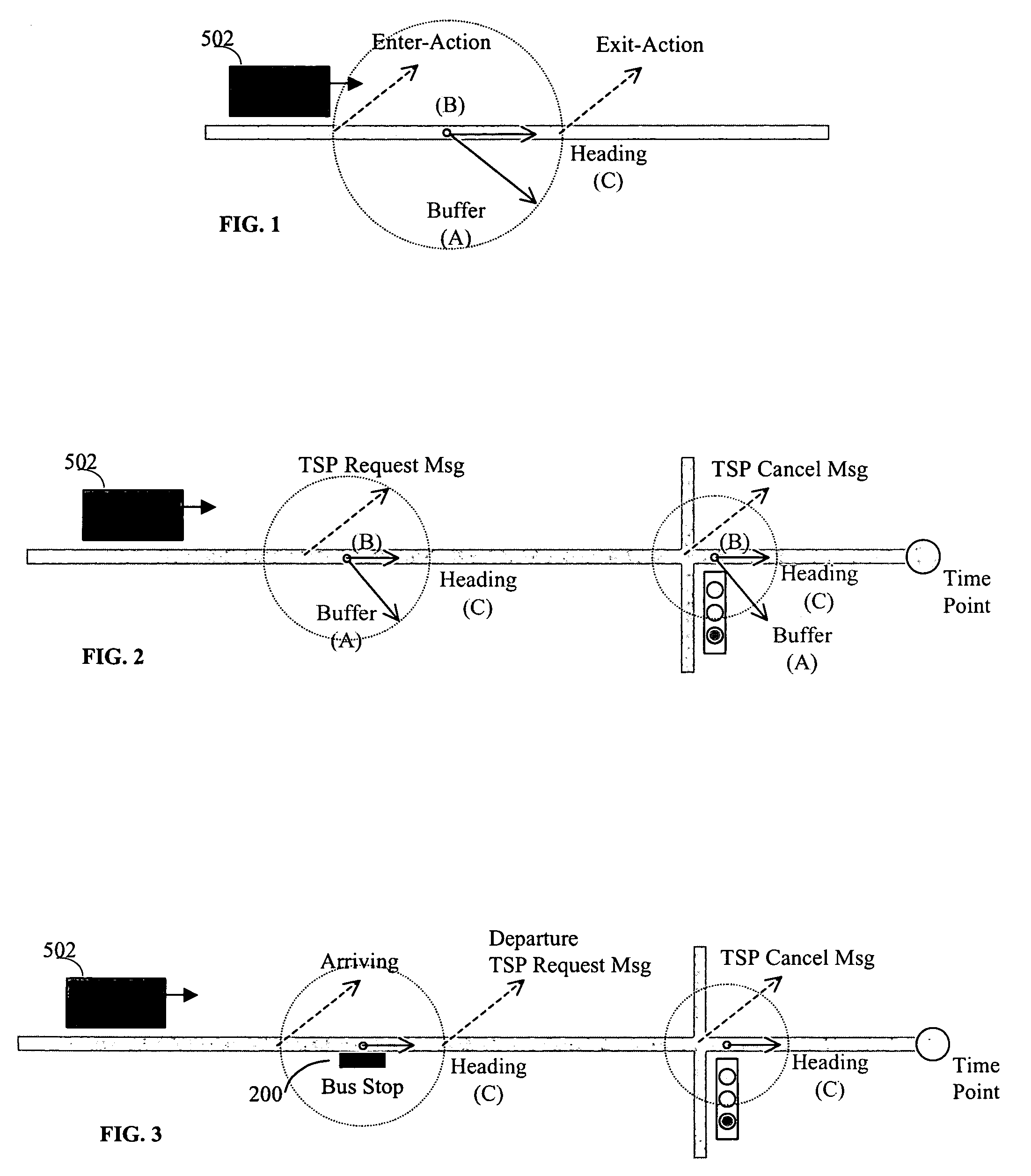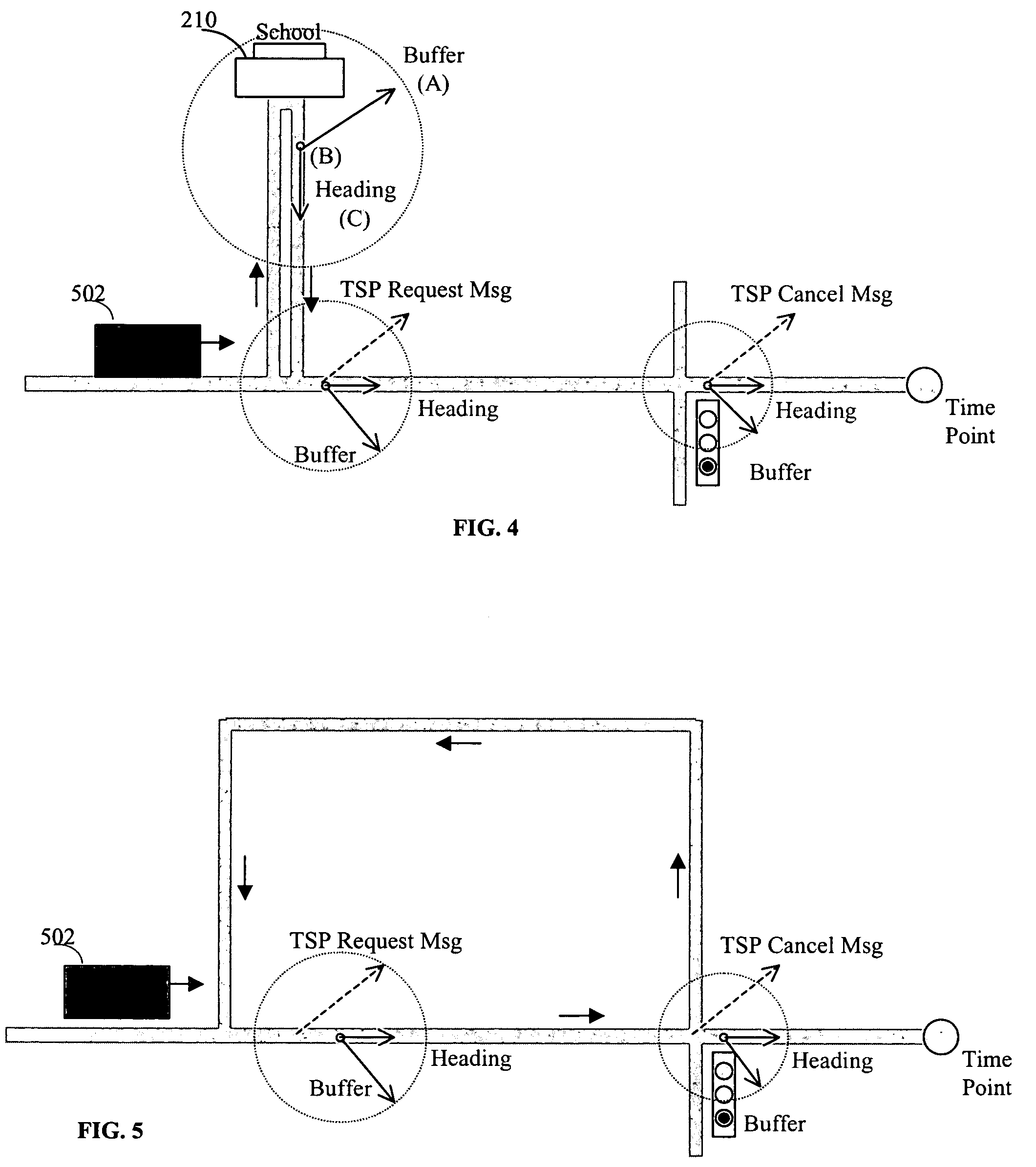Mobile event triggering function for transit management system using traffic signal priority
a technology of transit management system and traffic signal, applied in the field of traffic signal control, can solve the problems of affecting the accuracy of triggering the tsp request, unable to generate detailed information related to the vehicle, and it is difficult to incorporate any traffic control strategy algorithm into the tsp approach, so as to achieve reliable and accurate tsp triggering and improve tsp implementation
- Summary
- Abstract
- Description
- Claims
- Application Information
AI Technical Summary
Benefits of technology
Problems solved by technology
Method used
Image
Examples
Embodiment Construction
[0029]The invention is generally directed to a method and system that adds a traffic signal priority (TSP) subsystem using mobile event triggering function to an existing transit management system with an automatic vehicle location (AVL) and control (AVLC) mobile system. The automatic vehicle location system can use a GPS or a sophisticated mobile navigation system using the combination of GPS, inertial navigation system (INS), etc.
[0030]More particularly, the present invention adds a generic mobile event triggering function into the existing mobile system. The present function includes the definition of entry of an event, evaluation criteria, and associated actions related to the entry, exit, or timeout of a mobile event. The invention separates generic computer code that implements the mobile event function from data forming the actual event definitions, event criteria, event actions, etc. The separation of the implementation of the mobile event with event definition allows creati...
PUM
 Login to View More
Login to View More Abstract
Description
Claims
Application Information
 Login to View More
Login to View More - R&D
- Intellectual Property
- Life Sciences
- Materials
- Tech Scout
- Unparalleled Data Quality
- Higher Quality Content
- 60% Fewer Hallucinations
Browse by: Latest US Patents, China's latest patents, Technical Efficacy Thesaurus, Application Domain, Technology Topic, Popular Technical Reports.
© 2025 PatSnap. All rights reserved.Legal|Privacy policy|Modern Slavery Act Transparency Statement|Sitemap|About US| Contact US: help@patsnap.com



